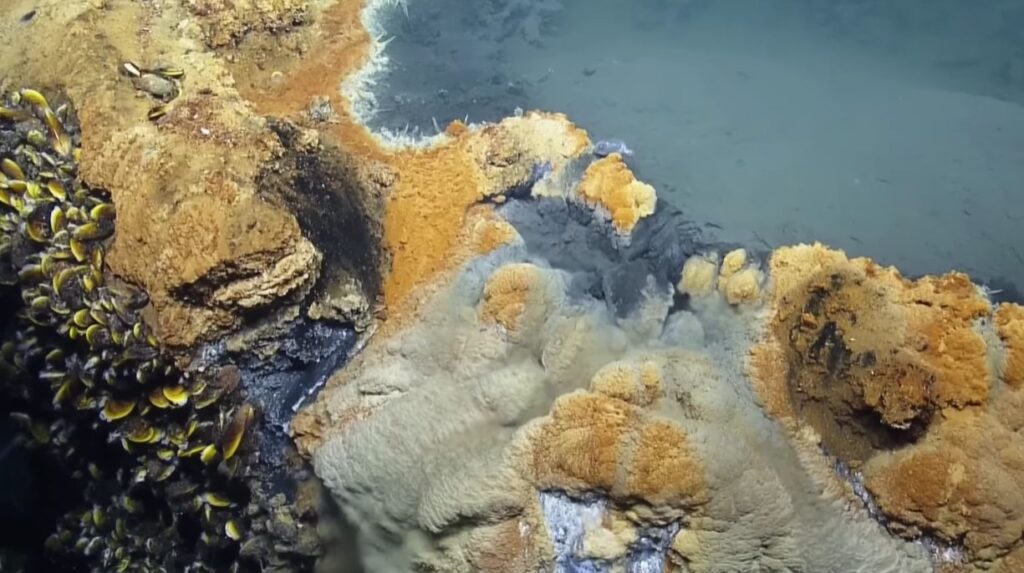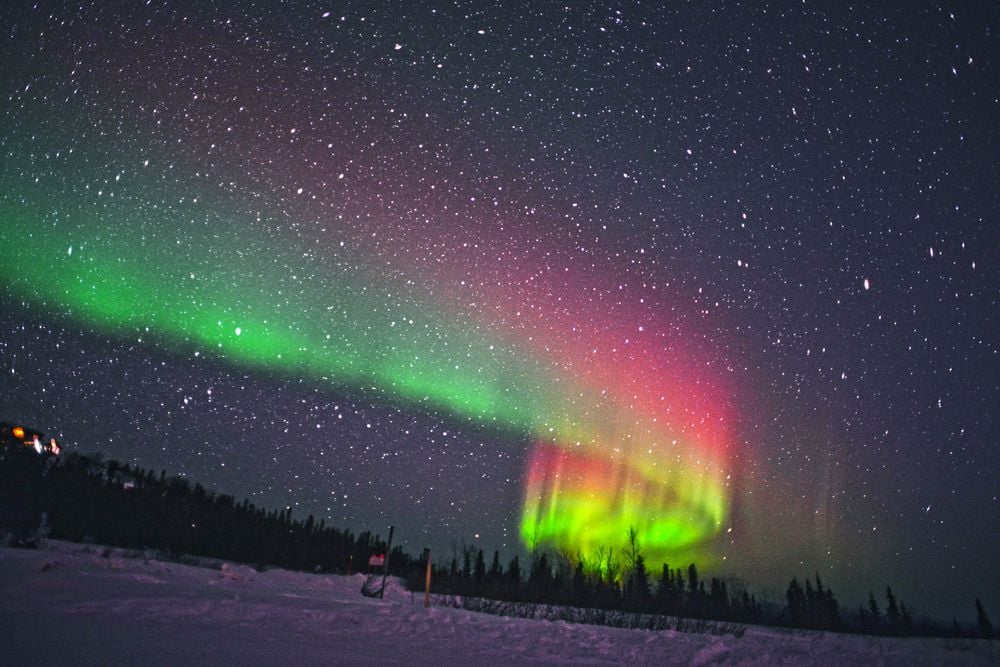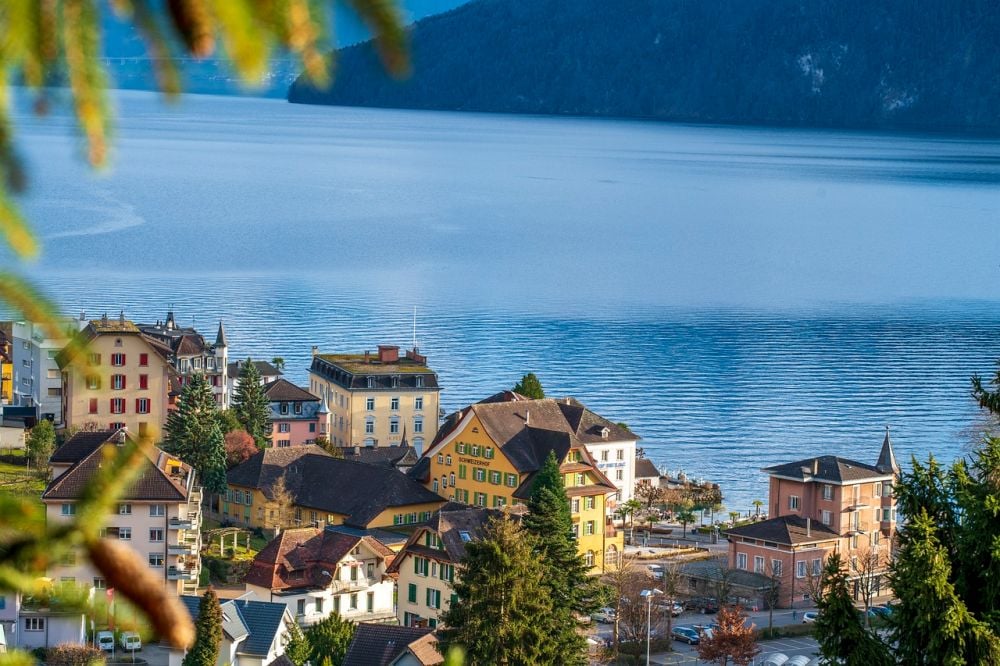Inside The “Jacuzzi Of Death”: A Deadly Site In The Gulf Of Mexico That Kills Anything That Enters
Deep beneath the Gulf of Mexico at a depth of 3,300 feet exists a deadly toxic brine pool that scientists have named the “Jacuzzi of Death.”
Also known as the “Jacuzzi of Despair,” it exists as a strange phenomenon that has been there since the Jurassic Period which was over 140 million years ago when dinosaurs roamed the earth.
In 2014 and 2015, the Exploration Vessel (EV) Nautilus dared to explore this lethal anomaly with its submersibles, uncovering a bizarre underwater trap where nearly any creature that enters meets a swift end.

Unlike the sketchy hot tubs on wayward cruise ships, this natural wonder isn’t just unpleasant — it’s fatal.
| Where is the “jacuzzi of death”? | Gulf of Mexico, off the coast of Louisiana |
| Is it Big? | Yes, about 100 in circumference, 12 feet deep |
| Why is this ‘jacuzzi ‘ deadly? | It has extreemly high salt and low oxygen levels |
What Is the ‘Jacuzzi of Death’?
Jacuzzi of Death are Brine pools — strange, hypersaline lakes resting in depressions on the seafloor — are like miniature oceans within the ocean itself.
The “Jacuzzi of Death” stands as one of the most notorious brine pools found in the Gulf of Mexico. An ancient period marked the beginning of its formation when a small sea became cut off from the main ocean before it dried up and left behind dense salt accumulations.
The ocean’s return to the area dissolved the salt deposits into the water which formed a lethal brine pool. The harsh environmental conditions of this area do not deter living organisms from establishing themselves at its borders. Mussels occupy the barite wall surrounding the pool because they have formed a symbiotic relationship with methane-loving bacteria.
The organisms remain alive by staying outside the lethal zone. The “Jacuzzi of Death” stands out from standard brine pools because it extends across 100 feet of space and reaches a depth of 12 feet. The water temperature inside the pool exceeds that of the surrounding ocean which led to its spooky yet deceptive nickname.
How Was The “Jacuzzi Of Death” Discovered?
The EV Nautilus vessel with its Ocean Exploration Trust backing deployed a remotely operated vehicle (ROV) in 2014 to study a mysterious brine pool in the Gulf of Mexico’s depths.
The mission returned in 2015 with a three-person human-operated vehicle (HOV) to record what became the most famous footage of this lethal underwater feature.
The EV Nautilus vessel dedicated itself to ocean exploration by conducting its first historic mission to investigate a lethal natural phenomenon beneath the ocean surface.
Why the “Jacuzzi of Death” Matters More Than You Think?
The brine pool maintains an environment that supports several of Earth’s most durable living organisms despite its toxic and hostile conditions. Extremophiles represent a group of microbes and bacteria that developed survival mechanisms for environments that support no other life forms.
The survival mechanisms of these organisms in harsh environments open new possibilities for biotechnological progress in industries that need life to operate in challenging conditions.
The “Jacuzzi of Death” holds additional importance beyond its scientific value. The world contains approximately fifty brine pools which serve as unique environments that enable scientists to study life on other planets. Temple University biologist Erik Cordes describes brine pools as hosting microbes that exist exclusively on Earth thus creating a “totally unique and alien world.”
Scientists study the life forms that survive in brine pools to learn about potential life patterns on distant planets and moons. The “Jacuzzi of Death” serves as both a deadly marine marvel and a vital tool for understanding cosmic life forms.

Brine pools represent among the most extreme and fascinating environments on Earth although their global distribution remains limited to a few dozen. These disconnected saltwater reservoirs provide scientists with possible samples of alien ecosystems that might exist beyond Earth.
Erik Cordes, a biology professor at Temple University who has spent years studying these strange formations, described them in an interview with Temple News as “a totally unique and alien world,” filled with microbes that exist nowhere else on Earth.
By examining the organisms that survive in and around these deadly pools, scientists can gain critical insights not only into life’s resilience here on our planet but also into the potential for life beyond Earth.
Are There Any Other Brine Pools That Exist Elsewhere?
Yes, as noted there are a few dozen of these deadly pools situated in two other locations.
While the “Jacuzzi of Death” in the Gulf of Mexico stands out as the most well-known it shares the ocean with several other deadly brine pools.
In fact, the Earth contains only three known regions where hypersaline lakes exist:
- Gulf of Mexico
- The Red Sea and the
- Mediterranean Sea
The brine pools in the Mediterranean Sea emerged from the Zanclean mega flood which reshaped Earth’s geological structure during a catastrophic flood of the basin. The ancient seas that isolated and dried up left behind extensive salt deposits which eventually dissolved into seawater to create these special underwater lakes. Salt tectonics refers to the geological process that produced the perfect environment for brine pools to form in isolated ocean floor pockets.
The Red Sea contains most of these brine pools with scientists identifying 25 distinct pools to date. The Red Sea maintains its reputation for beautiful resorts and marine life but remains known for deadly shark attacks and unexpected boat accidents that occur near its coastline. The region becomes more mysterious and dangerous because of its concealed brine pools.
These brine pools share similarities with the Gulf of Mexico’s “Jacuzzi of Death” because they display the same enchanting yet deadly characteristics. These breathtaking natural formations should be observed from afar because they do not welcome people who approach them closely.






